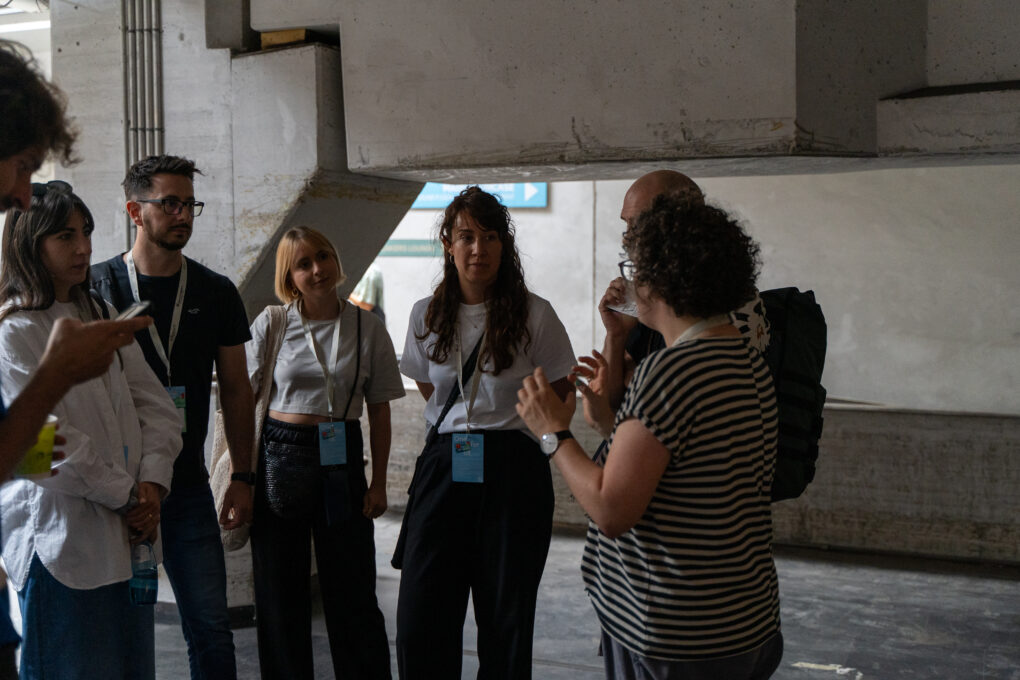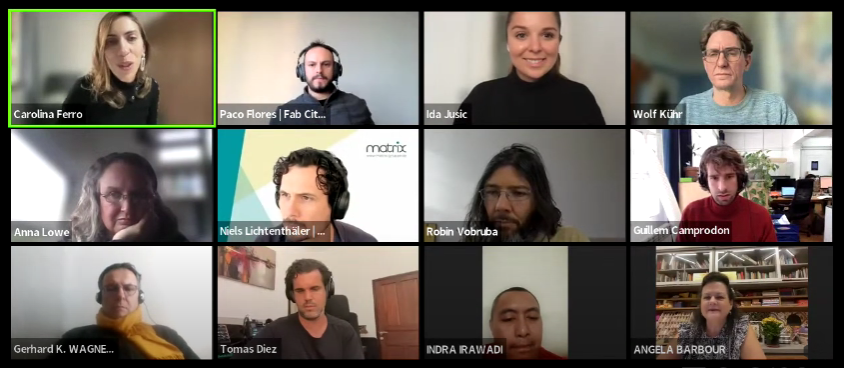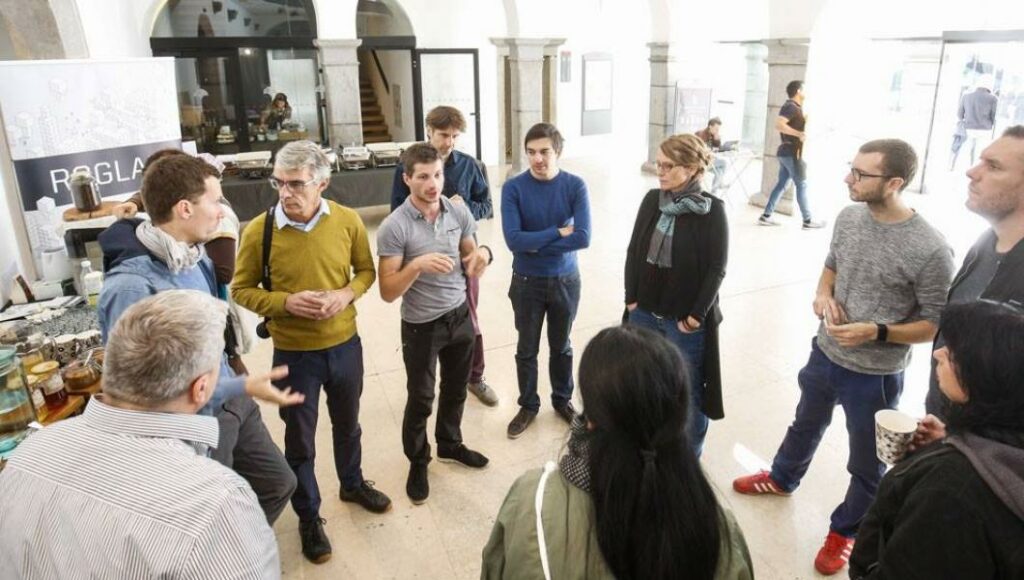
Becoming a Fab City, the how
This news post provides practical ways to organise sustainable Fab Localities and communities.
Understanding the fab city vision of building locally productive and globally connected self-sufficient localities is a critical step toward becoming a Fab City.
As we celebrate the milestone of the 10th anniversary of the Fab City Pledge in Barcelona, we explore the nuances of the Fab City journey through the perspectives of Milena Juarez (Fab City Barcelona) and Carolina Malini (Fab City Network, Brazil) during the first two round tables of 2024.
Why join the Fab City network?
The Fab City Global Initiative is a community of people all over the world committed to addressing real problems at the neighbourhood and bioregional scales opening opportunities for collaborations, research and education through the following:
01 Shared projects and opportunities supported by digital technologies
02 Enabling environment and support for policy implementation
03 Amplification and visibility of local innovation and expertise
04 Active worldwide knowledge exchange on best practices on urban solutions emerging from citizens, companies, educational institutions, and governments
What key tools, methods and resources support the community?
Fab City Full Stack, a framework that helps localities and regions interpret the Fab City challenge and guides them to implement it in a multiscalar and ecosystemic approach.
Fab City Challenge, a dynamic and innovative initiative that brings together diverse local and global stakeholders to address pressing challenges through the creative use of distributed design, digital fabrication and sustainable practices.
Master in Distributed Design and Innovation, a distributed learning program focused on the intersection of design, technology, ecosystems and communities to improve interspecies wellbeing.
Fab City Awards, a global platform to showcase your best practices, projects, products, services, policies, urban strategy, neighbourhood transformation, community empowerment action, or other types of initiatives!
Distributed Innovation Workshops, a series of international workshops that provides transformative learning experiences in various areas of innovation and sustainability.
Key learnings from the round tables: The case of two localities
Fab City Barcelona
Fab Lab Barcelona has been pivotal in driving change, particularly through its alignment with the Fab City approach and collaboration with other stakeholders such as the city council, other maker and creative spaces, as well as social organizations. Their initiative includes the launch of a network of productive and collaborative spaces, aiming at fostering a collaborative environment where ideas can ignite through gatherings, capacity building programmes and events thereby strengthening the “making” culture across Barcelona’s neighbourhoods.
Five contextualised principles based on the Fab City Manifesto. Credit: Milena Juarez, Fab Lab Barcelona
The heart of the Fab City Barcelona lies in its experimentation within the Poblenou neighbourhood, starting with small-scale prototypes that address local challenges. Despite facing obstacles such as rapid changes in infrastructure and high rents, the initiative sees opportunities in engaging local actors and blending digital fabrication with traditional methods. By prioritising principles from the Fab City manifesto that align with their context, the initiative fosters connections with policy makers, industry, and citizen-led initiatives, ensuring a holistic approach to tackling neighbourhood challenges.
Several projects, including Centrinno, REMIX EL Barrio – SISCODE, Circular Cities Challenge by Distributed Design, Make Works, and the Startz Prize award by Remix El Barrio, have been instrumental in supporting the strategic approach of Fab City Barcelona over time. These endeavours not only contribute to the experimentation and testing of ideas on a neighbourhood level but also underscore the importance of collaboration between various stakeholders in driving sustainable change within Barcelona’s urban fabric.
Key takeaways
– It’s crucial to align with local government initiatives and frameworks to gain support and legitimacy.
– Utilising gatherings and events as platforms for collaboration and idea generation is essential.
– Starting small and focusing on a specific neighbourhood for experimentation, as done in the Poblenou neighbourhood, allows for practical testing of ideas and solutions.
– Blending digital fabrication with traditional methods presents opportunities for innovation.
The Brazilian network
The Brazilian Fab Lab network embarked on a strategic roadmap with three primary targets: connection, attraction, and flow. They prioritised establishing connections among Brazilian fab labs and fostering dialogues with various partners, including universities, companies, schools, and public institutions. By tracking progress meticulously, they developed a new approval model for spaces aspiring to become fab labs, a model that gained international recognition and adoption within the fab lab network. Additionally, they focused on developing digital communication channels and hosting regular meetings to maintain a steady flow of collaboration and exchange within the community.
In 2019, the Brazilian Fab Lab Institute was established to organise the community and its collaborations, marking a significant milestone in their journey. This move allowed them to transition into a recognised legal institution capable of supporting innovative projects and initiatives. Riding on the positive momentum, they convened the first Brazilian Fab Cities meeting in collaboration with Sao Paulo City Hall during the Sao Paulo Maker Week. This gathering facilitated discussions on the essence of being a Brazilian fab city, as well as the associated challenges and advantages.
Students with high abilities take part in workshop at Fab Lab. Curitiba, 22/06/2022. Photo: Andre Wormsbecker
The global pandemic momentarily halted the network’s activities, prompting them to redirect efforts towards supporting the global fab lab community in addressing healthcare challenges. To reignite the network, a third meeting was held, focusing on connecting with international movements to update their strategy and gain momentum. Participation in events like the Bali Fab Fest further reinforced their commitment to the cause, with notable successes such as winning the Fab City Challenge.
Moving forward, they piloted engagement strategies in two cities, emphasising bottom-up approaches to implementing public fab labs and attracting investments. Their dedication to knowledge sharing and community building continues through efforts such as translating relevant materials into Portuguese and organising national gatherings based on the Sustainable Development Goals (SDGs) and Fab City principles, fostering connections and collaboration within local communities and on a global scale.
Key takeaways
– Having a clear roadmap with specific targets is crucial for establishing and growing a network or community.
– Establishing an institute or organisation can provide a centralised hub for coordinating community efforts and collaborations.
– Hosting events such as the Brazilian Fab Cities meeting can serve as catalysts for collaboration and growth.
– Connecting with international movements and events can provide valuable insights and resources for community building.
What can you do within your community?
With these insights in mind, you could begin by reaching out to local stakeholders, including government officials, community leaders, and potential collaborators, to discuss your community’s vision and gather support. Start organising community events and workshops, identifying a pilot neighbourhood for experimentation, and developing projects that address local challenges while leveraging the city’s resources and infrastructure. Conduct regular evaluation and adaptation based on feedback and outcomes to ensure the success and sustainability of your community initiatives over time.
For anyone looking to organise a community, join the Fab City movement, or gain insights into city-level innovations, these rich experiences offer valuable perspectives. They provide a roadmap for engaging with the Fab City Foundation in establishing networks or communities focused on fostering innovation and sustainability.
To delve deeper into the conversations that took place, we recommend visiting our YouTube channel to watch the recorded discussions.

